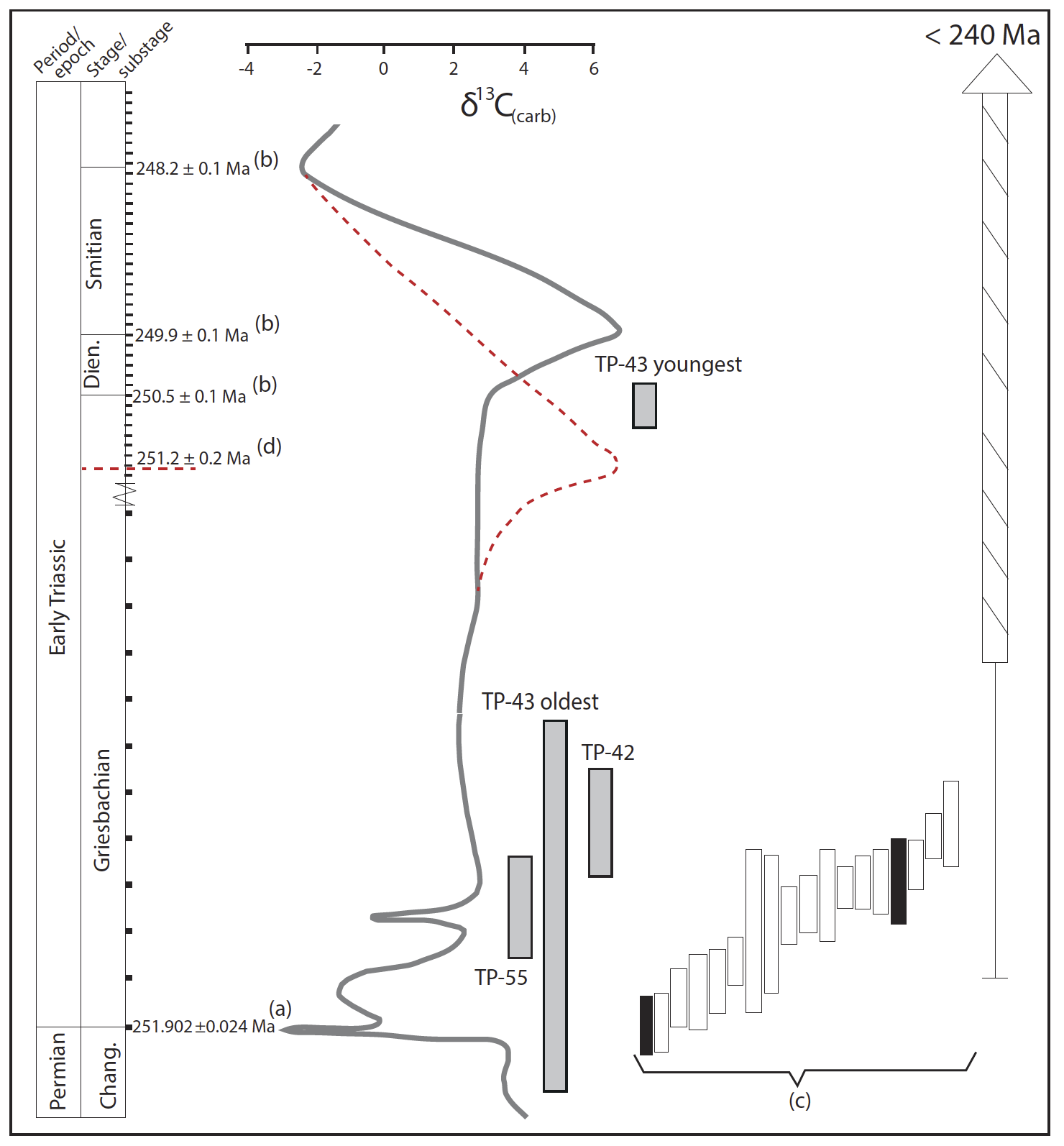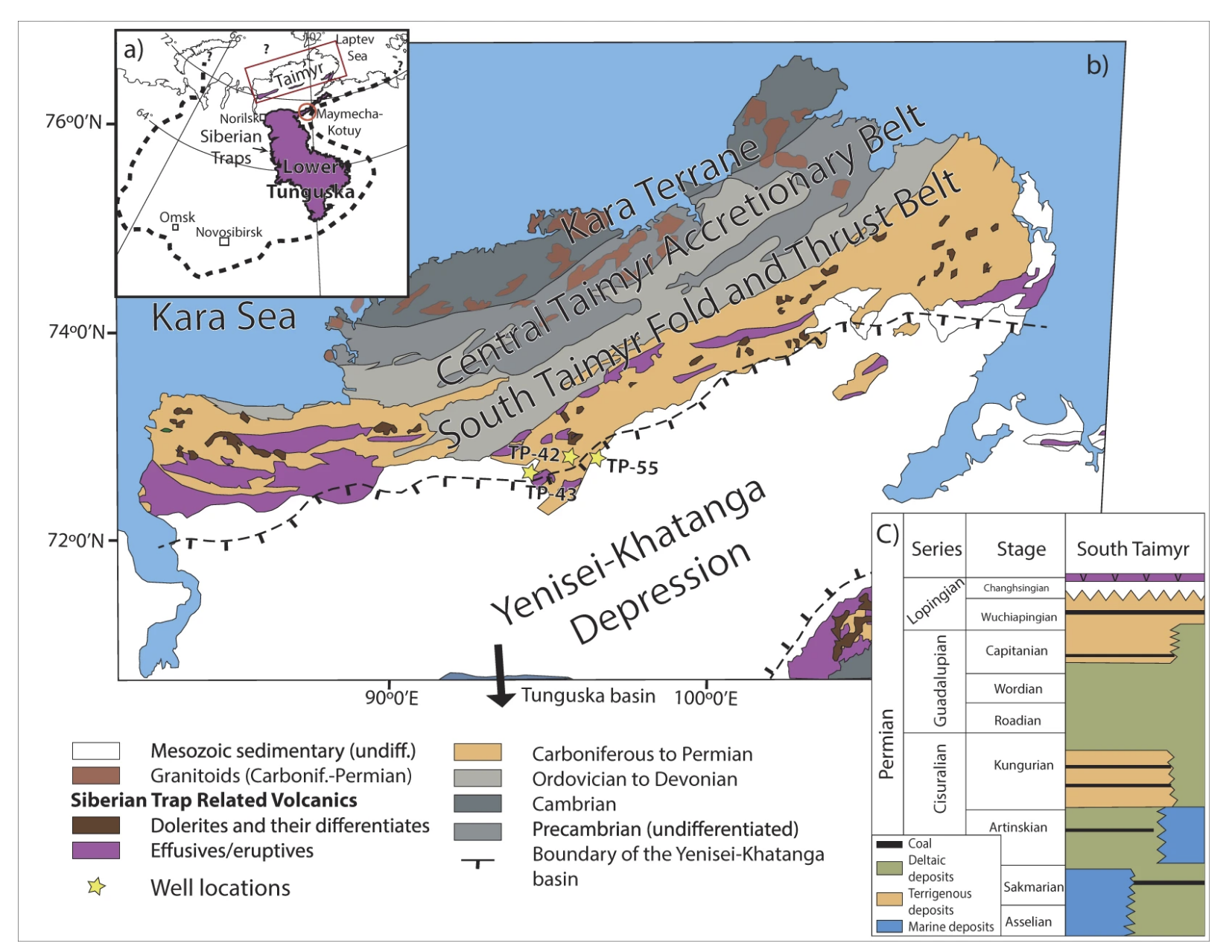
One of the largest large igneous provinces (LIP) on Earth, the Siberian Traps, has been linked to the most severe mass extinction in the Phanerozoic – the end-Permian mass extinction1event. Around 90 % of all species living at the time became extinct due to rapid environmental changes2, ocean acidification and possible destruction of the ozone layer. Research by CEED’s Henrik Svensen and co-workers had previously shown how the environmental perturbations were likely linked to the release of CO2, methane and Cl-, and Br-compounds related to the intrusion of basaltic magmatic rocks (sills) into salt and petroleum bearing sedimentary rocks of the central Siberian platform3 in a short lived event1. The “boiling” of the sediments led to degassing of the different gasses to the atmosphere –a process known as thermogenic degassing- thus rapidly changing the atmosphere and ocean chemistry.
In a paper out now in Scientific Reports – a Nature journal, a research team from CEED and collaborators from Russia add new constraints on the areal extent and types of rocks in the Siberian Traps that was emplaced during the short-lived1 main magma intrusion pulse. By conducting high precision U-Pb zircon dating conducted at the Dept. of Geosciences at the University of Oslo, along with isotopic and geochemical correlations, the new study links large layered intrusions on the Taimyr Peninsula, Arctic Siberia, to this main pulse of intrusive activity of the Siberian Traps.

The new results show that the main pulse of emplacement of magmatic rocks into the sedimentary rocks of the shallow crust occurred across an area at least 20 % larger than previously documented. This, furthermore, indicates that the volume of gases generated could have been at least 20 % higher than previously thought, which reconciles well with the severity of the climatic and biotic impacts of the Siberian Traps. Interestingly, the composition of the large layered complexes studied from Taimyr show that they were intruding the surrounding sedimentary rocks at high temperatures and was slowly crystallising and evolving into layered magmatic complexes. Hence these specific intrusions had the potential to incorporate and heat large volumes of the petroleum-bearing surrounding sediments and may thus have been particularly important in the generation of thermogenic gasses from the Siberian Traps.

A second important finding in the new study is the documentation of a younger magma pulse intruding the Taimyr area after the main pulse of intrusive magmatism. It had been assumed for some time that there were younger pulses of intrusive activity related to the Siberian Traps because there are significant perturbations of the climate record after the end-Permian mass extinction4, but the existence of such younger magmatic activity has not been robustly shown to occur before the contribution reported here. With more accurate and precise dating of the Early Triassic climate disturbances, the evaluation of potential links between late stage Siberian Traps magmatism and these climatic fluctuations will be possible.
Paper can be accessed for free: Augland, L.E., Ryabov, V.V., Vernikovsky, V.A. et al. The main pulse of the Siberian Traps expanded in size and composition. Scientific Reports 9, 18723 (2019) doi:10.1038/s41598-019-54023-2
References 1Burgess, S.D. and Bowring, S.A., 2015. High-precision geochronology confirms voluminous magmatism before, during, and after Earth’s most severe extinction. Science Advances, 1(7), p.e1500470. 2Burgess, S.D., Bowring, S. and Shen, S.Z., 2014. High-precision timeline for Earth’s most severe extinction. Proceedings of the National Academy of Sciences, 111(9), pp.3316-3321. 3Svensen, H., Planke, S., Polozov, A.G., Schmidbauer, N., Corfu, F., Podladchikov, Y.Y. and Jamtveit, B., 2009. Siberian gas venting and the end-Permian environmental crisis. Earth and Planetary Science Letters, 277(3-4), pp.490-500. 4Payne, J.L. and Kump, L.R., 2007. Evidence for recurrent Early Triassic massive volcanism from quantitative interpretation of carbon isotope fluctuations. Earth and Planetary Science Letters, 256(1-2), pp.264-277.





